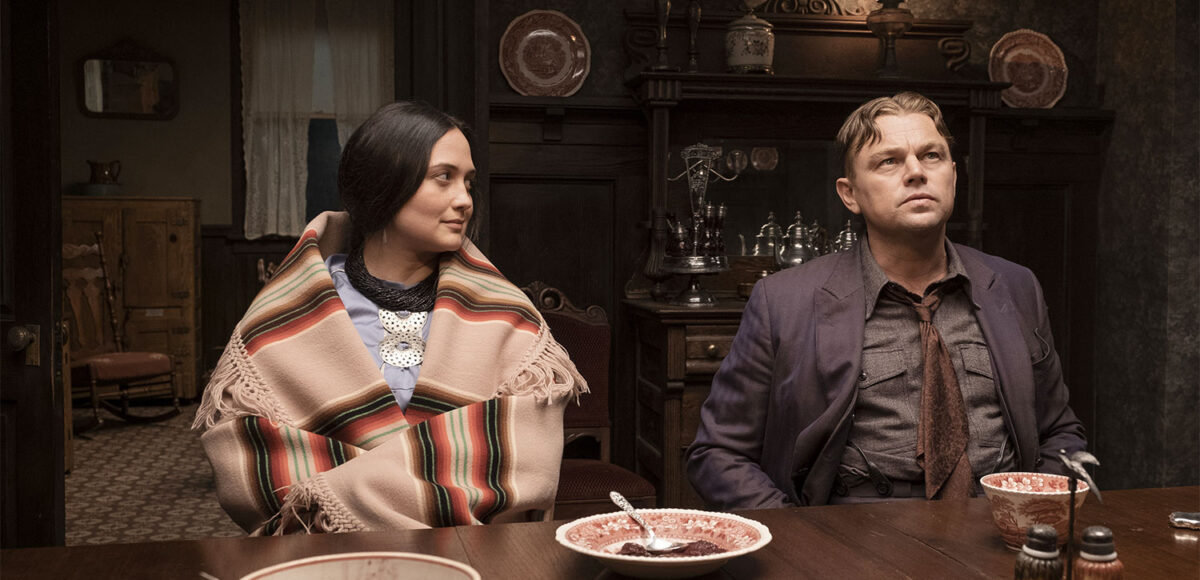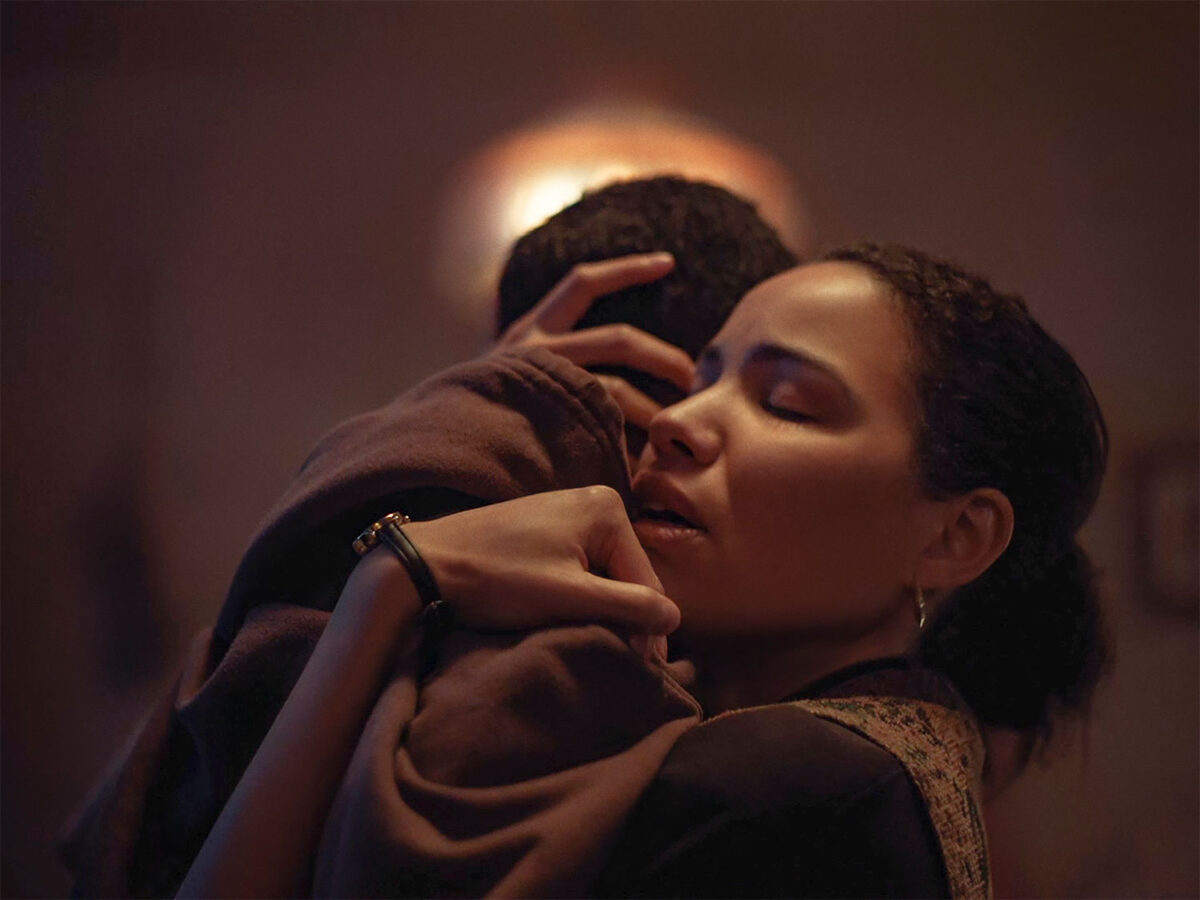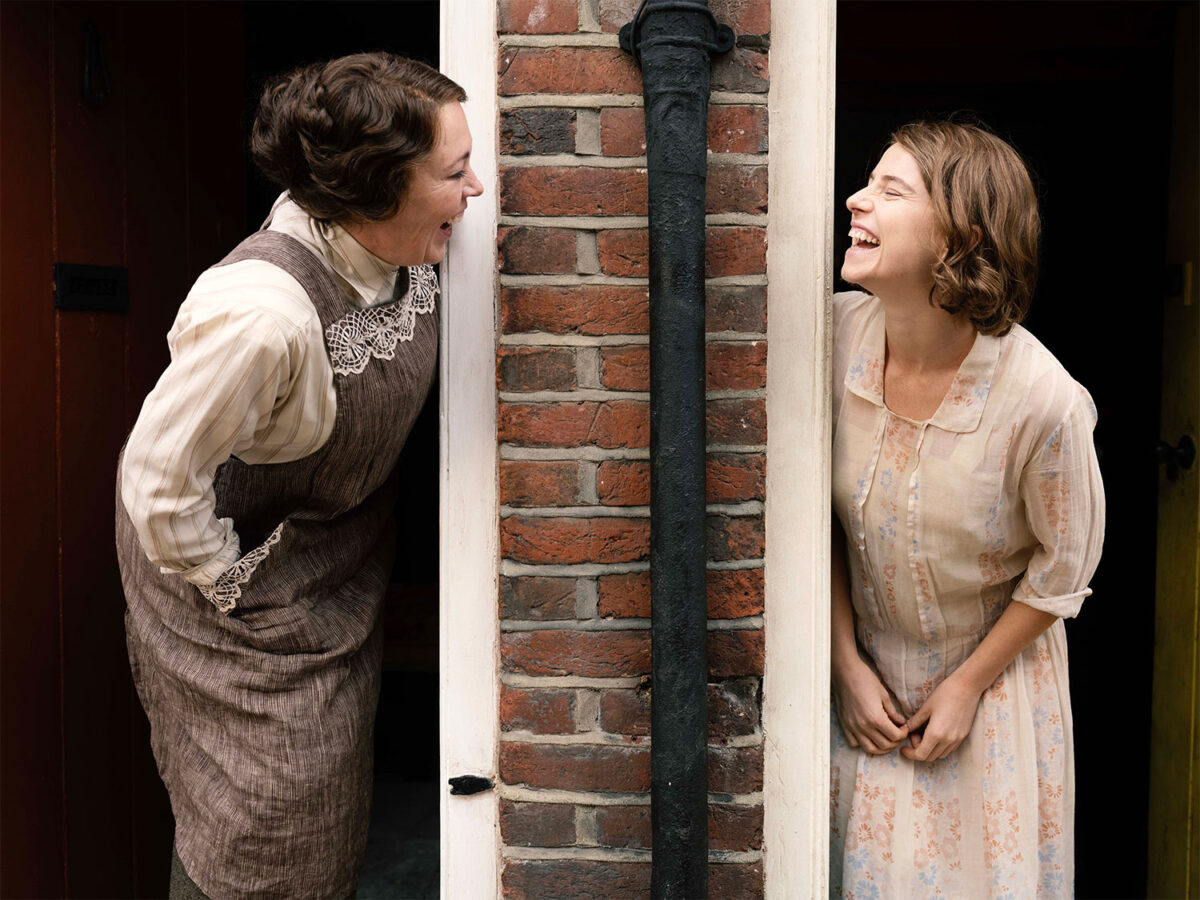“Killers of the Flower Moon” is Martin Scorsese’s epic ode to the Osage Nation, co-written with Eric Roth and based on the bestseller by David Grann. It is a story of heroic proportions at the center of which lies the seven deadly sins—pride, greed, lust, envy, gluttony, wrath and sloth.
The Osage people originally roamed the great plains throughout the Midwest but by the mid-19th century, the United States government forced them off their Kansas lands onto a reservation in desolate northern Oklahoma Territory. It was on this land, several decades later, at the end of the century, that oil was discovered, making the Osage some of the wealthiest people in the world. Each member of the tribe retained mineral rights to their property and leased the land to outsiders for resource exploitation. The area became the home to wildcatters, thieves, con men and all the myriad bad guys the Old West had to offer with the added benefit that the Native Americans owning the land had little or no legal protection against those plotting against them. And plot they did. The federal government had set up a system where the oil rights were divided equally between all members of the tribe, a system of “headrights.” The system was skewed, however, so that many of the rights owners, the wives, mothers and children of the male heads of household, had to be supervised by white “custodians” who dictated how the members could spend their money. This arrangement was rife with corruption that enriched the so-called custodians at the expense of the actual owners. Nevertheless, there was still great wealth for the members of the Osage Nation and room for its capitalization.
At the heart of this film is the confluence of a Machiavellian conspiracy, brutal murders, a love story and the nascent FBI.

World War I has ended and Ernest Burkhart, in full army regalia, steps off the train in Fairfax, Oklahoma, called there by his Uncle William “King” Hale. King is a wealthy cattle rancher on land just outside the reservation. He has work for his naive and corruptible nephew, joining with his younger brother Byron, also employed by King. A fluent speaker of the Osage language, King has a full grasp of Native American land rights and all the loopholes that can be used to exploit them. One did not have to be a member of the tribe to inherit a headright. Ernest, not exactly intellectually gifted, has been chosen carefully by his uncle for his limited ability to grasp complex situations, his acknowledged love of money, his appeal to the ladies and his absolute loyalty. There are, his uncle knows, two ways to obtain the wealth of the Osage—murder and intermarriage.
Murdering male members of the Osage tribe who had full “headrights,” an unalloyed allocation of the oil royalties without white supervision, pushed the headrights to their heirs, most often women and children whose access to the wealth was more limited. Intermarriage with white settlers would then give the white husbands, appointed supervisors of the family treasure, full access, through their wives and children, to the huge sums pouring into the Osage coffers. If, by unlucky happenstance, those wives were to die, then the children of that mixed marriage would inherit a wealth that would flow to the fathers who would, under those questionable circumstances, be able to control and gain those headrights.
Ernest is pointed in the direction of Molly, a beautiful Osage woman with rights to a part of the family allotment. Single, she quickly falls sway to Ernest. Although lacking in finesse, he is handsome and he, too, is drawn to her. Exploiting their mutual lust, King soon achieves his goal of intermarriage. But Molly and Ernest seem actually to be in love and children soon follow. Uncle King, however, knows Ernest’s true nature, his inherent laziness and his greed for more of everything. Ernest, easily manipulated, is blindly led down a path of murder and mayhem, whether carried out personally or by hiring others to do his uncle’s bidding. His familial loyalty is cleaved between King and the genuine love he feels for his wife. He is not one to question authority, especially not when the carrot at the end of the stick is gold.

Murders and suspicious deaths increase at a dizzying speed. Soon they are hitting Molly’s family and, now the last of her clan, she begins to fall ill and waste away. Even as she hovers at death’s door, she travels with a group of tribe members to Washington to ask President Coolidge for help in solving the murders in their town. Law enforcement in Fairfax, such that it is, has turned a blind eye to even the most obvious deaths. As one character mentions, “You have a better chance of convicting someone who kicked a dog than of murdering an Indian.” Following the money, however, Coolidge sends a contingent of the new Bureau of Investigation to solve the crimes plaguing this important group of Native Americans.
The broad strokes of “Killers of the Flower Moon” are historically accurate. The characters’ names have not been changed to protect the innocent because, with the exception of Osage tribe members, no one was innocent. Gann, in his award-winning work of non-fiction, told the true story with every ugly detail intact. It was up to Scorsese, a longtime fan of the book, to bring this long-forgotten incident back into the light.
Using a mixture of archival and recreated sepia-colored newsreel footage, he sets the scene of this last vestige of the Wild West. The cinematography is superb, both as lush and filthy as the story itself. Production design recreates the era so well that you begin to feel engulfed in the ever-present mud. But Scorsese is nothing if not an actor’s director and here he has a cast that excels, from the smallest roles to the stars. Actors portraying tribe members were all Native Americans, some with acting experience, some without and all were convincing in their roles. But it is not them that you are coming to see.
Robert De Niro as William “King” Hale is extraordinarily restrained as the true villain of the piece. The evil is in his eyes but the tightness of his lips and economy of movement is what makes him so dangerous. In a morality play, he would be Mephistopheles leading a dull-witted Faust, nephew Ernest, down the path of all the aforementioned seven sins before, too late, he recognizes the danger. De Niro’s restraint should, perhaps, have been peeled away as he approaches the consequences of his actions, but it is too tightly woven into the persona of the God-fearing Christian he believes himself to be. He has convinced himself that his actions are better for society in general, much like Charles Wilson’s alleged quote, “What’s good for General Motors is good for America.”
In what traditionally has been referred to as a “small but pivotal” role, Jesse Plemons as Tom White, the leader of the Bureau of Investigations team, is mesmerizing, full stop. The moment he sets foot in a scene, he dominates it in a quiet, engaging, non-pyrotechnic way. Plemons has a habit of subtly, methodically and emphatically stealing scenes, whether in “The Power of the Dog” or the second season of “Fargo;” you can’t look away when he’s there. Hero or villain, and here he’s a hero, his natural warmth enhances his portrayal.
Lily Gladstone, an accomplished Native American actor, uses her extraordinary natural beauty and stillness of manner to inhabit the role of Molly, the woman with a bull’s eye on her back. A sly combination of weak and strong, she becomes complicit in her marriage to Ernest, seeing but refusing to inhale the evil that surrounds her even as those near and dear start to disappear. There is an ingrained subservience and resignation as she does what authority figures demand of her. Her love for Ernest is unwavering even though all the signs point to disaster. In some ways, she is the star of this filmic retelling of the Osage murders.

Leonardo DiCaprio, in the challenging role of Ernest Burkhart, has the vacant eyes of a lost soul. He is the very embodiment of those Seven Deadly Sins his uncle employs for his own means. His remaining close family ties are his brother and his uncle, working in tandem to use his sloth and greed to their advantage. That he would actually fall deeply in love with the target of King’s machinations highlights the ambiguity of his character and DiCaprio effectively captures the obtuseness of a man who sees only what is directly in front of him without contemplating the consequences. DiCaprio is best when the walls of his actions begin to close in on him. He is the classic patsy, set up to take the fall without the ability to see how it will affect him.
What Scorsese does best is set up situations for characters and let them play out. Here he uses the classic platform of the Western. There are the bad guys and their victims and the cavalry to the rescue, in this case the Bureau of Investigation. It is probably an intentional irony that Ernest is given a white hat by his soon-to-be wife. The plot is straight out of a John Ford Western, whether “My Darling Clementine” or “The Man Who Shot Liberty Valance,” with a bit less nuance. But Scorsese isn’t working with legend, he’s actually working with fact. Here he has turned the old “Liberty Valance” quote on its head – “When the truth becomes legend, print the legend.” Here he prints the truth.
The major failing of this film is its length, 3½ hours. You will never be bored but you will come away with the feeling that Scorsese was way too self-indulgent. This story could easily have been told in 2½ to 3 hours maximum. “Oppenheimer” was 3 hours that flew by without a wasted moment. Such is not the case with “Killers of the Flower Moon.” The story is bloated and suffers from overkill, and I definitely meant that in all meanings of the expression. The coda-type ending was superfluous, regardless of whether or not such an incident occurred (it did). It was unnecessary and takes you out of an important moment that he had been building up to. The end result is that Scorsese has made a very good movie but not a truly great one.
Opening Oct. 20 at the Lumière Cinema at the Music Hall in Beverly Hills, the AMC Century City 15, the AMC Broadway 4 in Santa Monica, the AMC Santa Monica, the Laemmle Monica, the Regency Village Theater in Westwood and many others. See it on an IMAX if possible. Many AMC theaters provide closed captioning. Streaming on Apple TV+ later this year.
Neely Swanson spent most of her professional career in the television industry, almost all of it working for David E. Kelley. In her last full-time position as Executive Vice President of Development, she reviewed writer submissions and targeted content for adaptation. As she has often said, she did book reports for a living. For several years she was a freelance writer for “Written By,” the magazine of the WGA West, and was adjunct faculty at USC in the writing division of the School of Cinematic Arts. Neely has been writing film and television reviews for the “Easy Reader” for more than 10 years. Her past reviews can be read on Rotten Tomatoes where she is a tomato-approved critic.







